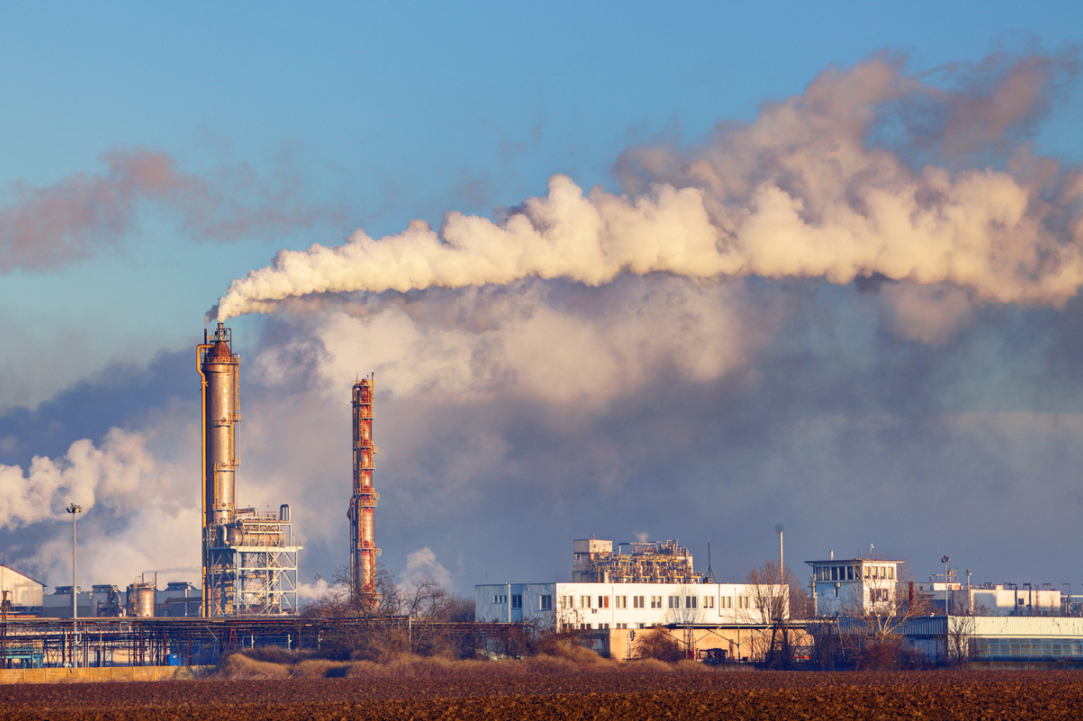Researchers Propose Carbon Debt System to Combat Global Warming

An international team of researchers, including Artem Baklanov, Research Fellow of the International Laboratory of Game Theory and Decision Making, HSE University, has proposed treating greenhouse gas emissions as financial debt in a new research article published in Nature. This approach could provide immediate economic incentives for enterprises to begin mitigating the harmful effects of their business activities.
One of the aims of the Paris Agreement is to reach zero carbon emissions by 2050. Some countries have already begun taxing greenhouse gas emissions, with more nations expected to follow in the future. Although this tax incentivizes efforts to reduce emissions, special economic policy instruments are needed to guarantee net carbon dioxide removal (CDR) and ensure the viability of ambitious climate targets.
Under the Paris Agreement, the European Union, the United States, and the United Kingdom have pledged to reach net zero carbon emissions by 2050 and to strive to limit global warming to 1.5°C this century. The term ‘net-zero emissions’ means not only reducing the amount of greenhouse gases generated, but also removing harmful emissions from the atmosphere using natural and manmade sinks. While efficient, widely available CDR technologies have yet to materialize, they will undoubtedly be required in order to meet the goals of the agreement by 2050.
In a February 2021 report, the UN warned that the international community is currently not on track to meet its targets. Earth’s so-called ‘carbon budget’—an estimate of the maximum amount of greenhouse gases that can be released into the atmosphere over time—will be depleted within the next decade. Meanwhile, the number of extreme weather events is growing and there is mounting evidence that even slight climate warming could have catastrophic consequences.
There is currently a fundamental economic problem in how methods of mitigating the effects of climate change are assessed. Existing economic policy instruments for controlling greenhouse gas emissions are not sufficient to incentivize a global transition to a negative carbon balance
A number of nations already impose taxes on enterprises that release carbon emissions into the atmosphere in an effort to achieve a net negative carbon economy. In addition to incentivizing emissions reductions, such taxes are used to raise funds which can be partially preserved and passed down from generation to generation to pay for carbon dioxide removal. This system works like a public welfare fund or a nuclear facility decommissioning fund. However, it is hard to objectively evaluate whether the accumulated tax will be enough to support future atmosphere purification technologies, as the amount of tax may change over time and the funds raised may be used for other purposes. At the same time, global warming is slowly but steadily leading to environmental catastrophe, irrespective of the world’s economic model. Therefore, this approach is unlikely to change the situation.
The authors of the research—which was conducted by an international team that includes Artem Baklanov, Research Fellow of the International Laboratory of Game Theory and Decision Making at HSE University—propose a mechanism for controlling greenhouse gas emissions inspired by the financial market.
The researchers suggest treating greenhouse gas generation as a financial debt. Any company that releases carbon dioxide into the atmosphere incurs a carbon debt and must commit to removing its emissions. This commitment is called a ‘Carbon Removal Obligation (CRO)’, and carbon debtors must pay interest until their debts are cleared. The money raised could cover the default risks of the CROs and the potential environmental damage caused by such ‘borrowing’. This reflects the fact that carbon borrowing can lead to short-term increases in the carbon budget target temperatures of 1.5°C to 2°C—targets considered reasonably safe by the researcher community.
Manufacturers who generate greenhouse gases can decide how much of their CO2 emissions to compensate for now, and how much carbon debt they will either pay off in the future or settle by removing emissions from the atmosphere by technological means
Enterprises are still responsible for meeting deadlines and ensuring net negative emissions. This allows them to balance current and future emissions reduction based on their own expectations of developments such as potential technological breakthroughs.
The researchers demonstrate that due to the rapidly depleting global carbon budget, their proposed financial approach to carbon debt is essential to any reliable system for mitigating climate change. It allows widespread decarbonization solutions to be implemented faster and more smoothly at a time when climate-related disasters could be triggered earlier than anticipated. The current generation has a lot to contribute to the fight against global warming without shifting the responsibility onto future generations—but only if we start paying off our debts right away.

Artem Baklanov, Research Fellow of the International Laboratory of Game Theory and Decision Making, co-author of the article
We have proposed an idealized approach that transforms the carbon quota trading market into a kind of financial market. This elegant idea would reduce the conflict between economic growth and the depleting carbon budget, as well as cover the potential climate risks faced by future generations, and make the deployment of carbon-removal infrastructure more realistic and economically feasible. All these strengths of our idea raise hopes that the goals of the Paris Agreement can be achieved.
Artem Baklanov
Research Fellow, International Laboratory of Game Theory and Decision Making
See also:
‘It’s Thrilling to Have an Opportunity to Discuss Your Scientific Ideas with Interested People’
The International Laboratory of Dynamical Systems and Applications at HSE University–Nizhny Novgorod conducts in-depth theoretical and applied research, including the study of ocean waves, solar corona reconnections, volcanic phenomena, and ship stability. The lab’s researchers, who have received more than 20 significant research grants over the past five years, actively cooperate with Russian and international colleagues from China, Spain, the USA, the UK, Brazil, and other countries. Prof. Olga Pochinka spoke to the HSE News Service about the laboratory’s work.
'We Wanted to Create an Opportunity for Intercampus Teams to Engage in Promising Studies'
HSE University has announced the winners of the Project Competition in Basic Science Research for Intercampus Departments. The competition, which the university is organising for the first time, will provide funding to 10 research teams working on five topics. Four of the winning projects will be implemented by new research departments formed as a result of the competition.
Research Reveals RNA's Role in Cancer Progression
An international group of scientists and medical specialists, including HSE researchers, examined the role played by microRNA (miRNA) and long non-coding RNAs on the progression of ovarian cancer. Having analysed more than a hundred tumour samples, they found that miRNA can prevent cell mutation while long non-coding RNAs have the opposite effect of enabling such mutations. These findings can help design new drugs which act by regulating miRNA concentrations. The study was published in the International Journal of Molecular Sciences.
‘We Managed to Bring Together Specialists in AI, Pure Mathematics, and Neurobiology’
In early September, the HSE University Faculty of Computer Science hosted the international conference Computer Methods of Cognitome Analysis. The event was organised by the International Laboratory of Algebraic Topology and Its Applications at the faculty.
Russian Researchers Propose New Approach to Studying Facial Emotion Recognition
Researchers of the HSE University and the Southern Federal University (SFedU) have tested a new method for studying the perception of facial emotional expressions. They suggest that asking subjects to recognise emotional expressions from dynamic video clips rather than static photographs can improve the accuracy of findings, eg in psychiatric and neurological studies. The paper is published in Applied Sciences.
Academics Started Working Even More During the Pandemic
Academics’ work week became even longer during the pandemic. This is true of researchers from different countries, independently of their gender and specialisation, an international research team with HSE University participation found. Their working time during the pandemic was 51 hours compared to the usual 40. The increased number of working hours per week seems to have become part of the new academic norm. The results of the study were published in the Plos One journal.
HSE Researchers Develop New Method for Analysing Genetic Admixture of Populations
Researchers of the HSE International Laboratory of Statistical and Computational Genomics together with their international colleagues have proposed a new statistical method for analysing population admixture that makes it possible to determine the time and number of migration waves more accurately. The history of Colombians and Mexicans (descendants of Native Americans, Spaniards and Africans) features two episodes of admixture that occurred about 350 and 200 years ago for Mexicans and 400 and 100 years ago for Colombians. The results were published in the Plos Genetics journal.
Scholars from Moscow and Vladivostok Join Efforts to Study Institutes and Preferences in Economic Behaviour
Applications from HSE departments for the ‘Mirror Laboratories’ open project competition are open until May 20. One of the ‘mirror laboratories’ successfully operating today was created as a result of a similar competition in 2020 by economists from HSE University and Far Eastern Federal University (FEFU) to study institutes and preferences in economic behaviour. Alexis Belianin, Head of the HSE International Laboratory for Experimental and Behavioural Economics, talked about how peers from Moscow and Vladivostok collaborate.
Stress Disorders More Prevalent among Doctors due to the Pandemic
Psychologists from HSE University have joined their peers from Ekaterinburg to look into the impact of the pandemic on the mental health of Russian doctors. They found that medical staff are suffering from stress, anxiety, and depression more often than before. The results of the study were published in International Journal of Environmental Research and Public Health.
International Laboratory of Landscape Ecology Opens at HSE University
The laboratory will be led by Robert Sandlersky, a specialist in energy and mass transfer and the study of other properties of landscapes via satellite imagery and Senior Research Fellow at the Severtsov Institute of Ecology and Evolution of the Russian Academy of Sciences. The HSE News Service spoke to Robert about the laboratory’s future activities.


